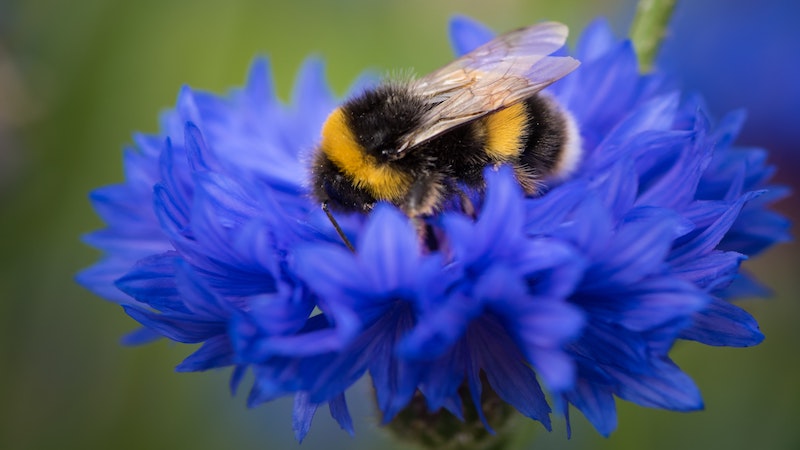Solar parks should offer bumblebees a new habitat
Solar parks could offer bumblebees a new habitat in the future, so that the stocks increase. Specially created areas should not only increase the number of insects significantly, but also make a valuable contribution to nature and animal protection.
Solar farms are not everyone’s preferred source of renewable energy. Because photovoltaic systems cover several hundred hectares of meadows and fields that are unusable for other purposes.
The fact that solar parks can also be beneficial for biodiversity emerges from one Study from England out. Hollie Blaydes, a PhD student at Lancaster University, presented preliminary research showing that simple changes in how solar farms are managed can greatly increase bumble bee populations.
Solar farms increase bumblebee population
Using a model, the researchers simulated the foraging of bumblebees in British solar parks. Different cultivated areas offered the insects different amounts of forage resources.
The results of the investigations showed that the solar park areas that were managed as meadows housed four times as many bumblebees as solar parks that were used as grass areas. Because meadows offer the most resources for bumblebees.
In addition, the research group found that large, elongated, and resource-rich solar farms can also increase bumblebee density up to a kilometer radius outside the facility. The reason for this is that the insects also pollinated the plants in the surrounding agricultural areas.
This in turn could have positive effects on nearby crops. Farmers running solar farms could use pollination of agricultural crops to their advantage.
Results not yet fully explored
The results of the English researchers could also be interesting in Germany. Of the Nature Conservation Union Germany (NABU) already summarizedhow the potential of solar parks can be used.
Initially, however, the preliminary results of the research work from England remain just that: preliminary. Hollie Blaydes has not yet been able to conclusively say how effective it really is in the end to create solar parks as meadows.
Pollinator habitats have been created in some solar farms in the UK, but there is currently little evidence of the effectiveness of these measures. Our results provide solar farm owners and managers with clues that providing floral and nesting resources for bumblebees could be effective.
In addition, every new idea is also related to how intensively people really want to work for nature. Establishing and managing habitats for pollinators also involves costs. So far, there are no economic incentives for the solar industry to convert their parks into a new home for bumblebees.
Also interesting:



